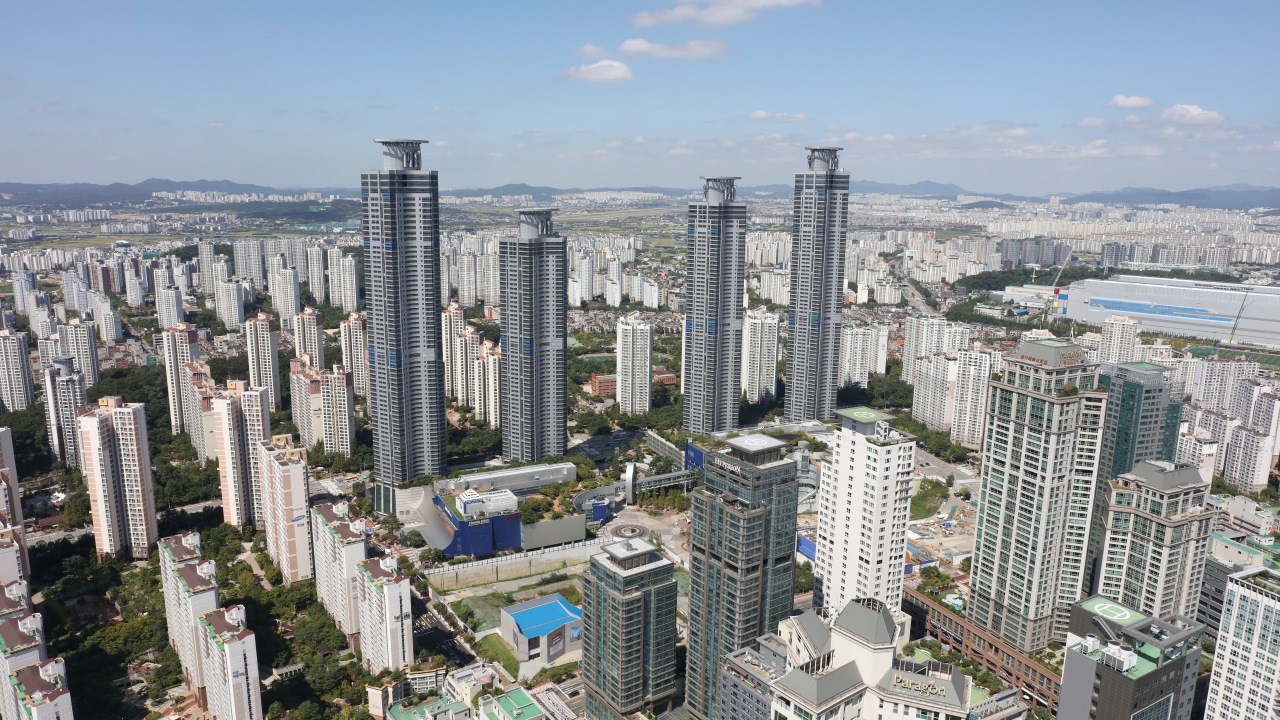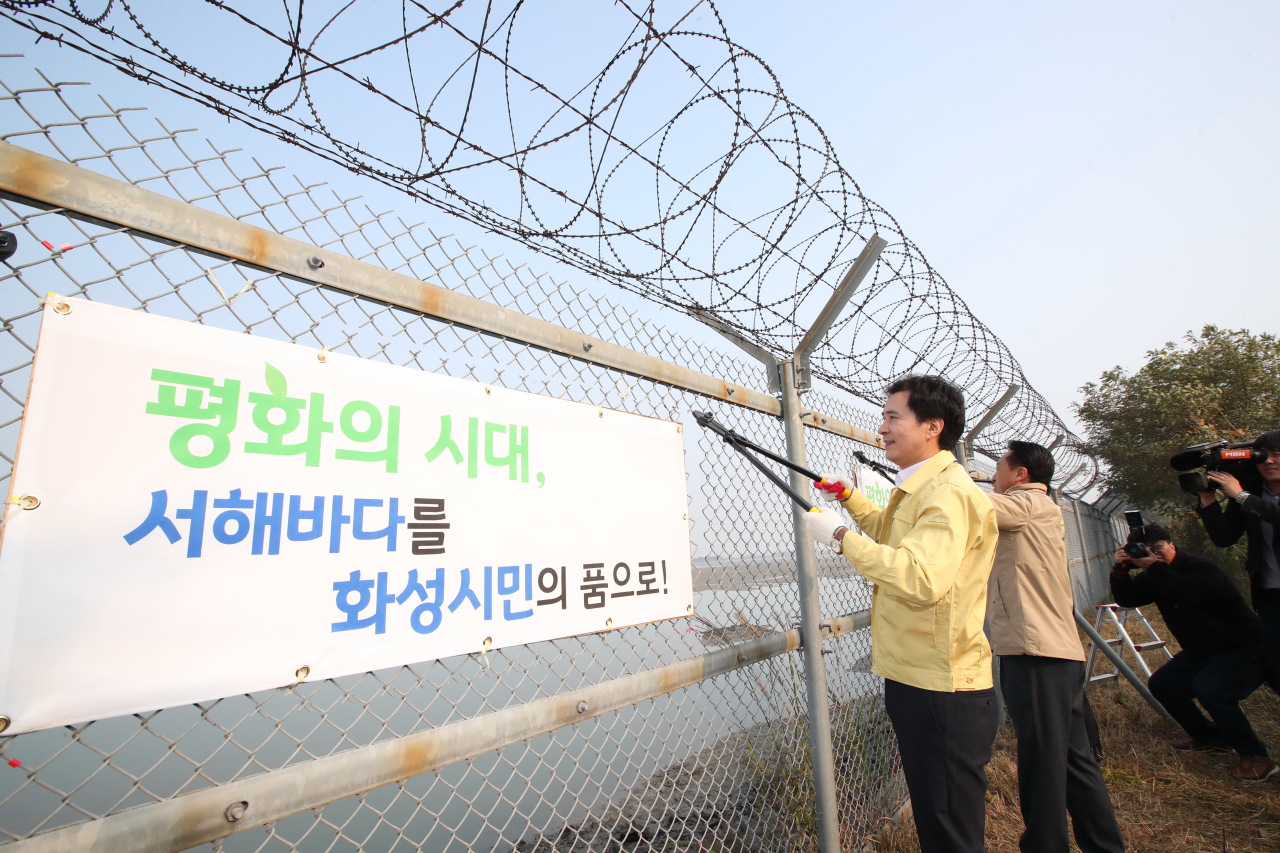Hwaseong set to become leading mega city of Gyeonggi
By Kim Yon-sePublished : Aug. 10, 2021 - 17:05

The population of Hwaseong, Gyeonggi Province has increased by 69.3 percent over the past decade, far outpacing the 13.8 percent growth of the province overall.
The city saw the demographic figure sharply climb from just over half a million in July 2011 to over 870,000 in July 2021. It has grown to be the fourth-largest city in Gyeonggi (the most populous region among the country’s 17 major cities and provinces), next to Suwon (the largest with 1.18 million), Goyang (1.08 million) and Yongin (1.07 million).
On the back of mega residential towns featuring new apartment complexes located in Dongtan-dong, Hwaseong has become the “youngest” region, with the average age of 37.7, of Gyeonggi Province’s 28 cities and three “gun” or counties.
Alongside Sejong, whose citizens’ average stands at 37.6, Hwaseong is one of the few local governments with the figure of under 40.
The city’s figure contrasted to the average age of 41.7 among residents in Gyeonggi Province, 43.4 in Seoul and 43.5 nationwide. This suggests the future competitiveness of Hwaseong in terms of regional workforce amid the fast-aging of most cities and provinces.

Further, the average age of residents in Hwaseong’s Dongtan district (from Dongtan 1-dong to Dongtan 8-dong) ranged between only 32.5 and 35.5 as of last month.
The city’s fiscal balance also showed a noteworthy increase to 3.54 trillion won ($3 billion) this year, compared to 2.79 trillion won in 2018, when Mayor Seo Cheol-mo took office.
Hwaseong topped the list for the fourth consecutive year in the state-led assessment of 226 local governments nationwide over their competitiveness index.
The city growth pace has accelerated since Seo’s took office. His fulfillment rate of electoral pledges has come to 79 percent: Of a total 81 pledges, 35 have been completed, 45 are fully, or partially underway and one was scrapped.
The city has also become a mecca of volunteer work, as the tally of volunteers in the region surged from 143,690 in 2017 to 196,428 in 2020. In the volunteering rate compared to population, Hwaseong with 20 percent far outstripped neighboring cities -- 13 percent in Yongin, 12 percent in Suwon and 12 percent in Ansan.
The city has raised transparency in the municipal administration by introducing the “civil auditor system,” under which citizens are entitled to supervise a variety of large-scale business contracts between the city and private enterprises.
Its performance in the education sector is gaining favorable comments from both residents and other cities by expanding lifetime educational facilities for seniors; nursery facilities; and meal service centers for students.
Hwaseong has ranked No. 1 in Gyeonggi Province in the area of parks, buoyed by the mayor’s policy to actively coordinate with the central government’s goal of a Green New Deal.
A remarkable performance was offering free-of-charge buses for citizens, which has reduced greenhouse gas emission, offered movement rights for seniors and children, and vitalized the regional economy.
Since 2018, the number of bus lines has increased sharply, operating from downtown Hwaseong to Seoul, other major Gyeonggi cities and rural districts in Hwaseong. In addition, the Dongtan Urban Railway, which is under construction, is scheduled to launch in 2027.
In the hiring segment, the city topped the list in employment rate in 2019 and 2020 among the 28 cities and three “gun” in Gyeonggi Province.
Earlier this year, Mayor Seo revitalized the construction project for Hwaseong International Theme Park, which had been nullified two times over the past decade. The futuristic theme park -- whose completion of construction is slated for 2026 -- is projected to attract 19 million visitors per annum.
The multiple culture facilities built around Dongtan Lake Park, has been called an oasis in the downtown area, contributing to quality of life for urban residents.
The city is also known for conducting fair taxation policies, and has been acknowledged by the National Tax Service. It is also showing an exceptional performance in collecting overdue taxes and tracking down tax evaders in collaboration with investigative agencies.
The fisheries industry in the city saw its output increase by 27.3 percent over the past three years. Its agricultural segment is operating “smart farms,” which are backed by drones and helicopters for higher productivity.
Hwaseong has 15 “dong”, four “eup” and nine “myeon” administrative districts. Each eup and myeon is also split up into smaller units known as “ri.”
Hwaseong takes its name from the Suwon Hwaseong castle built during the era of King Jeongjo of Joseon dynasty (1392-1910). Its western part is called Namyang, while the eastern part is called the Byeongjeom New Town and the Dongtan 1 New Town.
Since late 2017, construction of the Dongtan 2 New Town and SRT Dongtan high speed rail station has been underway, both of which would be located to the east of the Gyeongbu Expressway.
Among its neighboring cities are Gyeonggi Provinces’ Pyeongtaek, Osan, Anseong, Yongin, Suwon, Ansan and Siheung.
Hwaseong has an area of 693 square kilometers, making it the fourth-largest of the 31 cities and gun in the province. The city far outstrips Gimpo (276 square kilometers), Goyang (267 square kilometers), Suwon (121 square kilometers), Seongnam (141 square kilometers) and Bucheon (53 square kilometers).
By Kim Yon-se and Park Joung-kyu (kys@heraldcorp.com)








![[Kim Seong-kon] Democracy and the future of South Korea](http://res.heraldm.com/phpwas/restmb_idxmake.php?idx=644&simg=/content/image/2024/04/16/20240416050802_0.jpg&u=)







![[KH Explains] Hyundai's full hybrid edge to pay off amid slow transition to pure EVs](http://res.heraldm.com/phpwas/restmb_idxmake.php?idx=652&simg=/content/image/2024/04/18/20240418050645_0.jpg&u=20240418181020)

![[Today’s K-pop] Zico drops snippet of collaboration with Jennie](http://res.heraldm.com/phpwas/restmb_idxmake.php?idx=642&simg=/content/image/2024/04/18/20240418050702_0.jpg&u=)